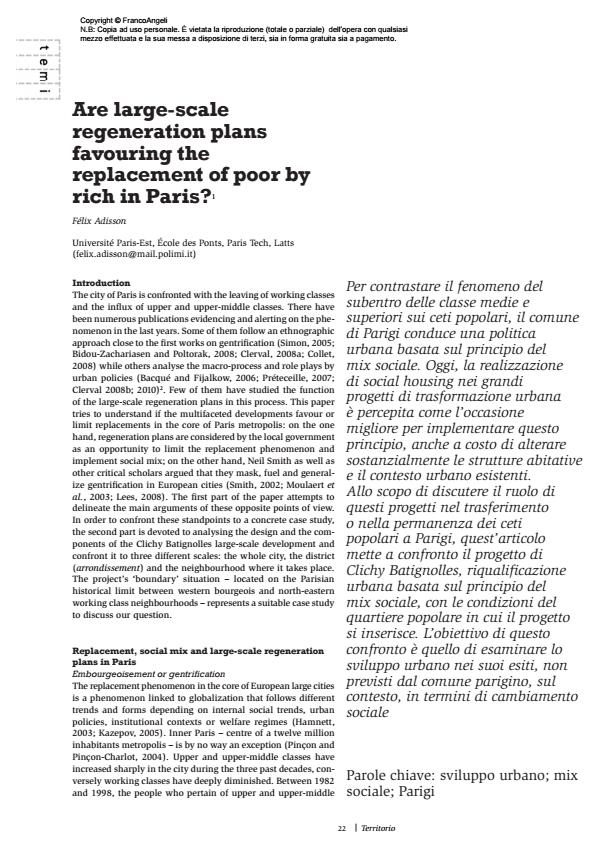Are large-scale regeneration plans favouring the replacement of poor by rich in Paris?
Titolo Rivista TERRITORIO
Autori/Curatori Félix Adisson
Anno di pubblicazione 2013 Fascicolo 2013/65
Lingua Inglese Numero pagine 9 P. 22-30 Dimensione file 608 KB
DOI 10.3280/TR2013-065003
Il DOI è il codice a barre della proprietà intellettuale: per saperne di più
clicca qui
Qui sotto puoi vedere in anteprima la prima pagina di questo articolo.
Se questo articolo ti interessa, lo puoi acquistare (e scaricare in formato pdf) seguendo le facili indicazioni per acquistare il download credit. Acquista Download Credits per scaricare questo Articolo in formato PDF

FrancoAngeli è membro della Publishers International Linking Association, Inc (PILA)associazione indipendente e non profit per facilitare (attraverso i servizi tecnologici implementati da CrossRef.org) l’accesso degli studiosi ai contenuti digitali nelle pubblicazioni professionali e scientifiche
In order to fight the problem of the replacement of the lower classes by the middle and upper classes, the City of Paris is pursuing an urban policy based on the principle of a social mix. Today, the creation of social housing in large urban development projects is perceived as the best opportunity to implement this principle, even at the cost of substantially altering existing dwelling structures and the urban context. In order to discuss the role of these projects in the transfer or the maintenance of the lower classes in Paris, this paper compares the Clichy Batignolles project, an urban redevelopment project based on the principle of social mix, with the conditions of the working class neighbourhood in which the project is set. The objective of this comparision is to examine urban development in terms of the results which the City of Paris did not envisage, on the context, in terms of social change.
Parole chiave:Urban development; social mix; Paris
- From state restructuring to urban restructuring: The intermediation of public landownership in urban development projects in France Félix Adisson, in European Urban and Regional Studies /2018 pp.373
DOI: 10.1177/0969776417717308
Félix Adisson, Are large-scale regeneration plans favouring the replacement of poor by rich in Paris? in "TERRITORIO" 65/2013, pp 22-30, DOI: 10.3280/TR2013-065003